Evaluating Lambs
/I take lots of photos of lambs as they grow to put on the Sheep for Sale part of the website, but sometimes I need to gather the whole batch to be able to make real comparisons. I did this about a month ago.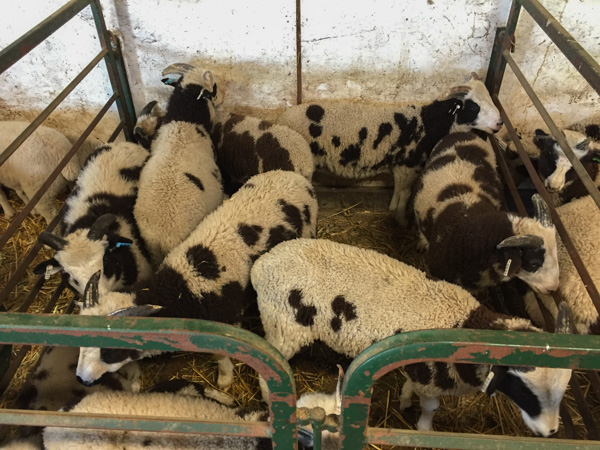 First I sort and start narrowing down choices. This is two-horn rams.
First I sort and start narrowing down choices. This is two-horn rams.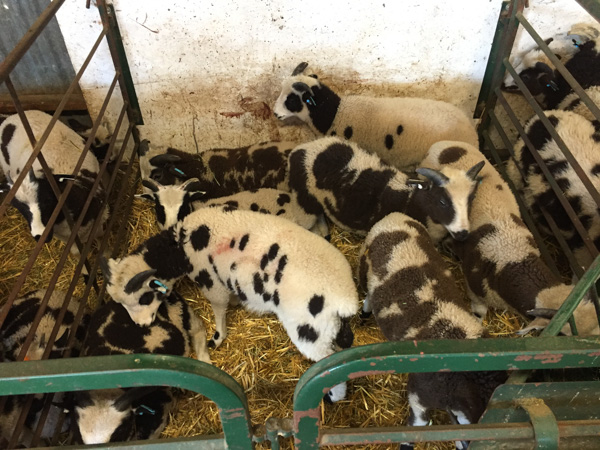 More two-horn rams.
More two-horn rams. 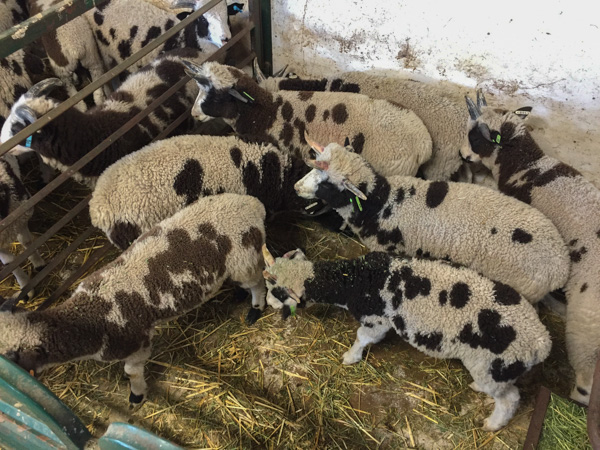 Four-horn rams (except for the one I liked best who broke his horn this morning and I put him out so he would hopefully not keep knocking it on others). I bred to two two-horn rams and one four-horn ram last year. There are more two horn lambs than four. Some ram lambs are missing from these groups because I had already castrated those that I knew right away would not be candidates for registration (too much or too little color or horns that were too close). Time to narrow these into groups.
Four-horn rams (except for the one I liked best who broke his horn this morning and I put him out so he would hopefully not keep knocking it on others). I bred to two two-horn rams and one four-horn ram last year. There are more two horn lambs than four. Some ram lambs are missing from these groups because I had already castrated those that I knew right away would not be candidates for registration (too much or too little color or horns that were too close). Time to narrow these into groups.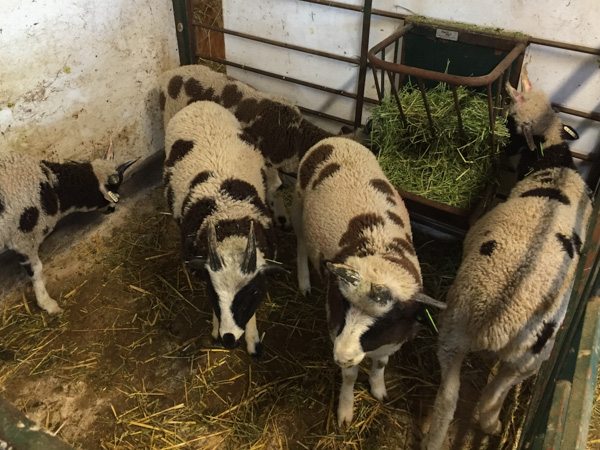 These are rams who will be on the cull list. It doesn't take much for a ram to be moved to that list. In this case two of these lambs (on the right) have wide spacing between the upper and lower horns. That seems like it would be a good thing, but usually those upper horns tip forward and sometimes there are other issues with them. I'll report back with more photos as they keep growing. The lamb facing the photo on the left doesn't have enough spacing between horns. His right side horns are already touching at the base leaving no room for growth. The other two both have a lot of freckling, although it's hard to see without parting the fleece and one is scrawny.
These are rams who will be on the cull list. It doesn't take much for a ram to be moved to that list. In this case two of these lambs (on the right) have wide spacing between the upper and lower horns. That seems like it would be a good thing, but usually those upper horns tip forward and sometimes there are other issues with them. I'll report back with more photos as they keep growing. The lamb facing the photo on the left doesn't have enough spacing between horns. His right side horns are already touching at the base leaving no room for growth. The other two both have a lot of freckling, although it's hard to see without parting the fleece and one is scrawny.
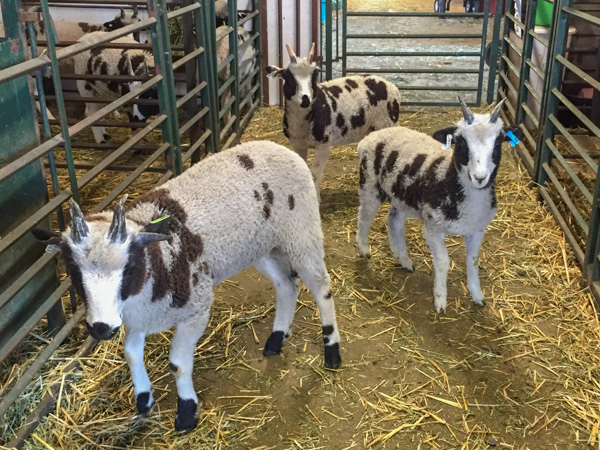 Three of the potential 4-horn breeding rams. Nice horn spacing and shape so far. No sign of freckling. Color % OK. Nice looking fleeces. Britch wool not too high on back leg.
Three of the potential 4-horn breeding rams. Nice horn spacing and shape so far. No sign of freckling. Color % OK. Nice looking fleeces. Britch wool not too high on back leg. 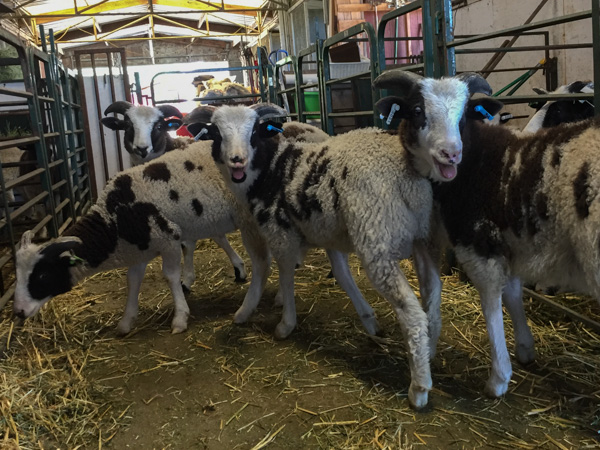 Out of two pens of ram lambs I pulled these four out as potential at this point. That is mostly due to the wide horn growth. There may be others in the pens but I won't guarantee the horn spread yet. Of course, they all have to meet the other criteria mentioned above as well.
Out of two pens of ram lambs I pulled these four out as potential at this point. That is mostly due to the wide horn growth. There may be others in the pens but I won't guarantee the horn spread yet. Of course, they all have to meet the other criteria mentioned above as well.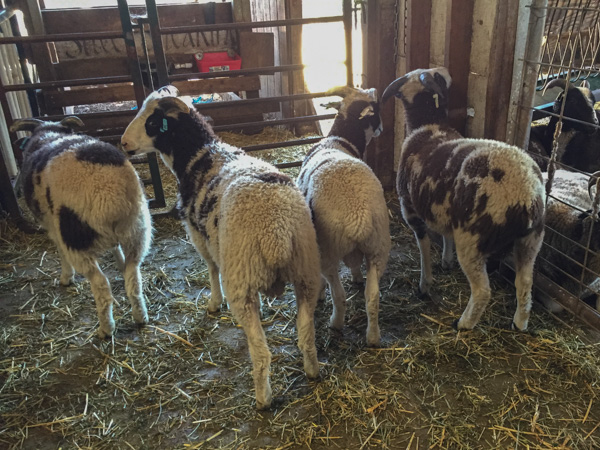 Here they are from the rear.
Here they are from the rear.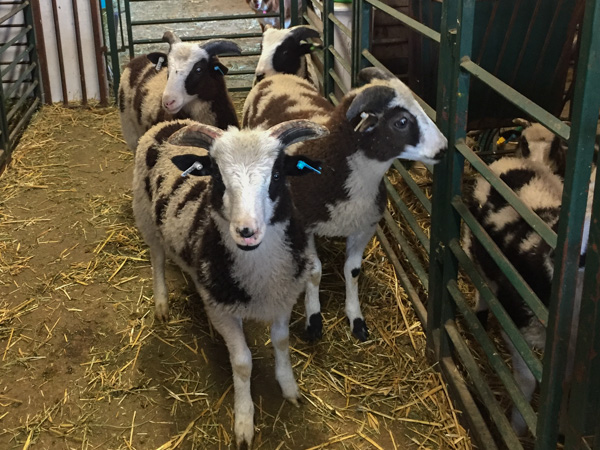 Another from the front showing the ram with the best horn spread so far.
Another from the front showing the ram with the best horn spread so far.
On to the ewe lambs.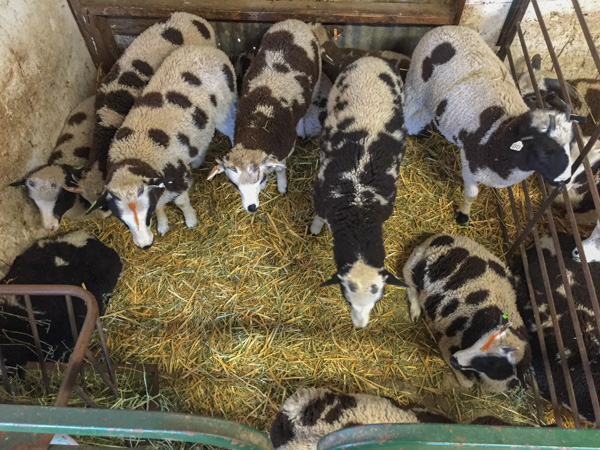 These are the 4-horn ewes. I will be less picky about the ewe lambs than the rams. The breed standard isn't so stringent and each ewe doesn't play as large a part in the flock as the ram. Keeping a variety of ewe lambs is a good way to maintain some genetic diversity (although that is a good reason to buy some lambs from other people in August).
These are the 4-horn ewes. I will be less picky about the ewe lambs than the rams. The breed standard isn't so stringent and each ewe doesn't play as large a part in the flock as the ram. Keeping a variety of ewe lambs is a good way to maintain some genetic diversity (although that is a good reason to buy some lambs from other people in August).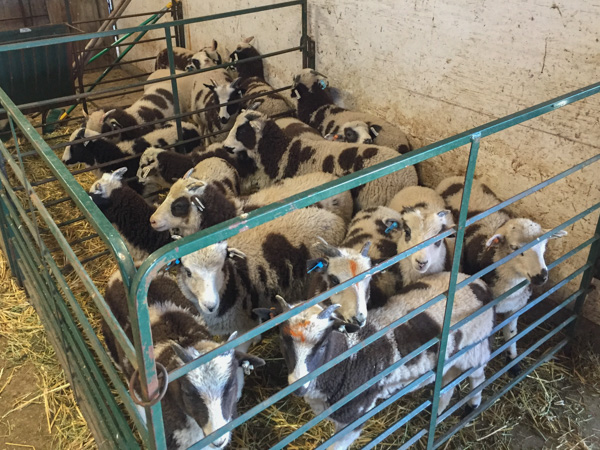 The 2-horn ewe lambs.
The 2-horn ewe lambs.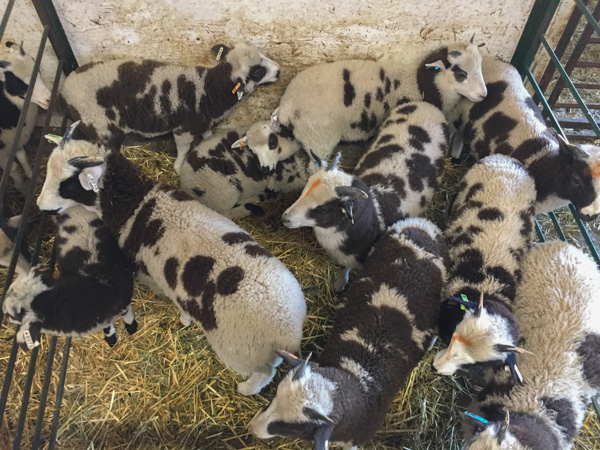 Another view of the pen on the right. Notice the two lambs (sisters) in the upper left corner. Compare their horn growth to the others. All these lambs are about the same age. Those two are showing minimal horn growth compared to the rest. I don't know if that is temporary and their horns will be just fine when they are mature or if those are scurs. This is another reason to look at the lambs in a group. All of the rest of these lambs look fine to me so it will be hard to narrow this down to only a few to keep.
Another view of the pen on the right. Notice the two lambs (sisters) in the upper left corner. Compare their horn growth to the others. All these lambs are about the same age. Those two are showing minimal horn growth compared to the rest. I don't know if that is temporary and their horns will be just fine when they are mature or if those are scurs. This is another reason to look at the lambs in a group. All of the rest of these lambs look fine to me so it will be hard to narrow this down to only a few to keep.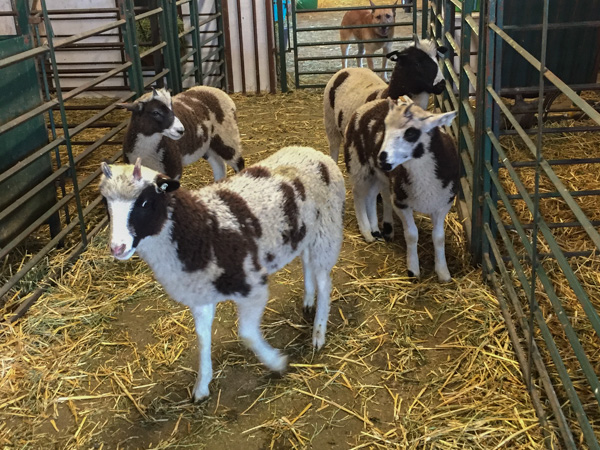 These are some of my 4-horn choices. Preliminary selection is based on wool and lack of freckling in the lamb and the dam.
These are some of my 4-horn choices. Preliminary selection is based on wool and lack of freckling in the lamb and the dam.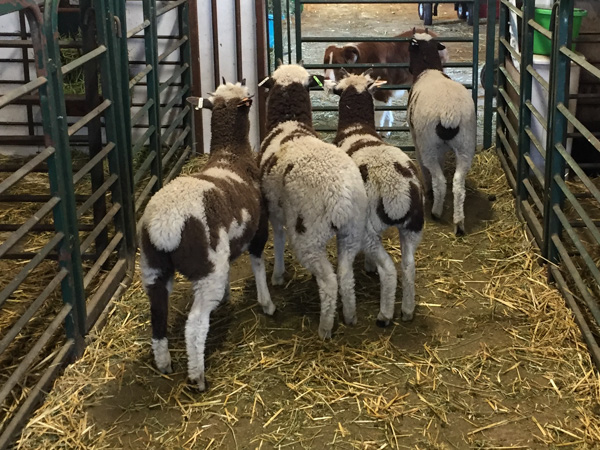 The same group from the rear. I don't fault the sheep for their rear leg position, but from this photo it would be the lamb on the left that I'd take to a show.
The same group from the rear. I don't fault the sheep for their rear leg position, but from this photo it would be the lamb on the left that I'd take to a show.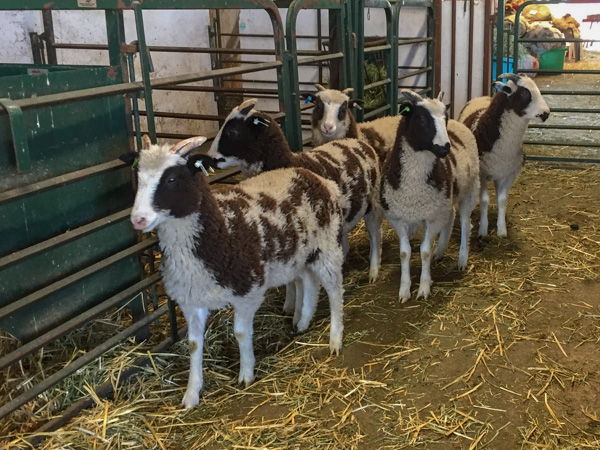 Two horn lambs that I like.
Two horn lambs that I like.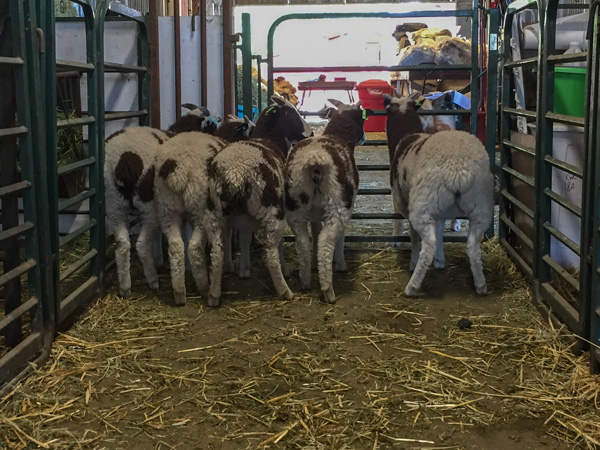 From the rear.
From the rear.
Uh oh. I have selected a few more than my original five or fewer. There will be more selection work ahead.

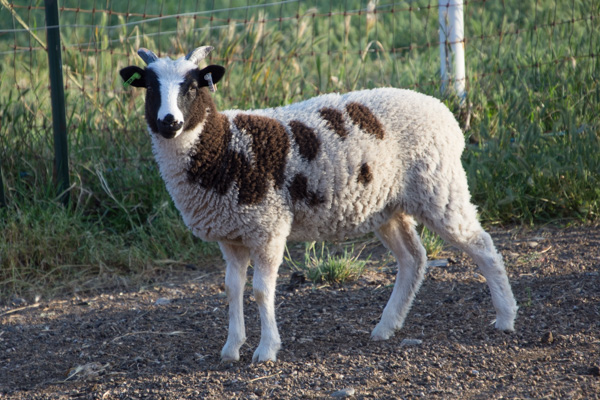
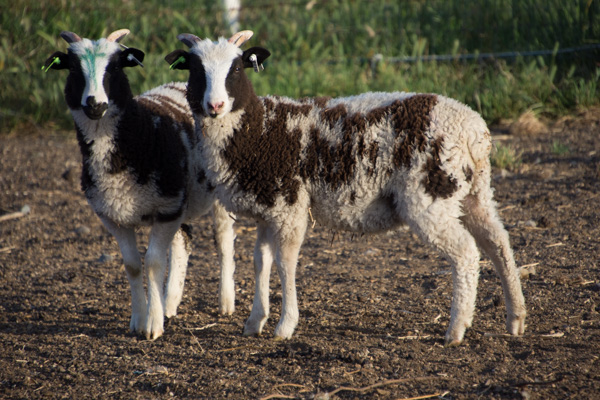
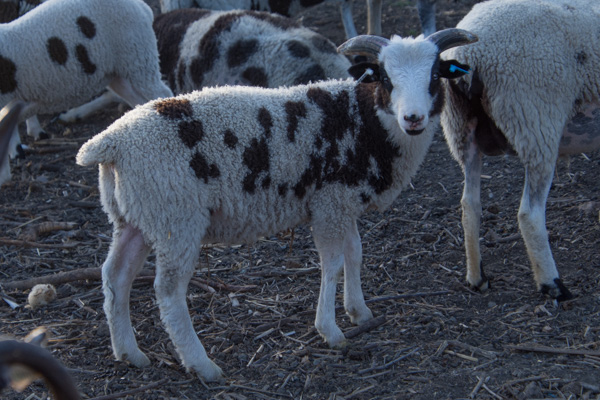
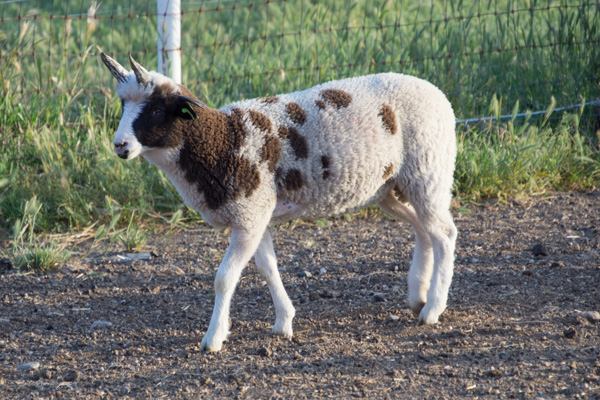
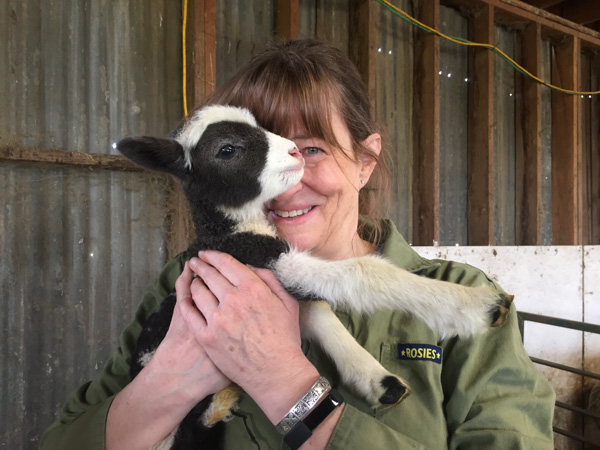
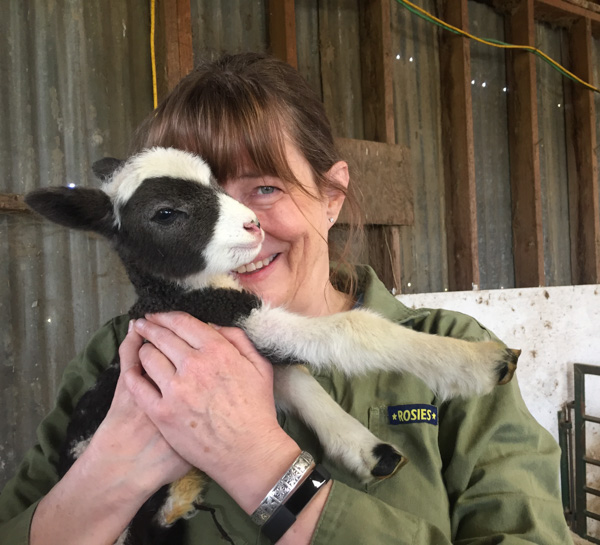 Zorra had plenty of cuddling while she was still in the lambing area with her mom. Lisa is a lamb cuddling Pro.
Zorra had plenty of cuddling while she was still in the lambing area with her mom. Lisa is a lamb cuddling Pro.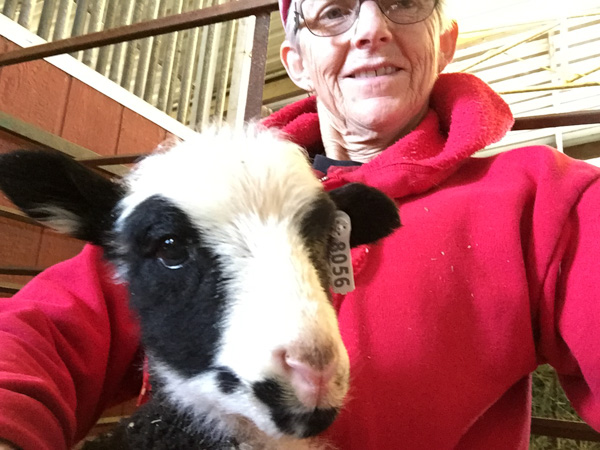 This is pet sheep Jade's lamb (and me).
This is pet sheep Jade's lamb (and me).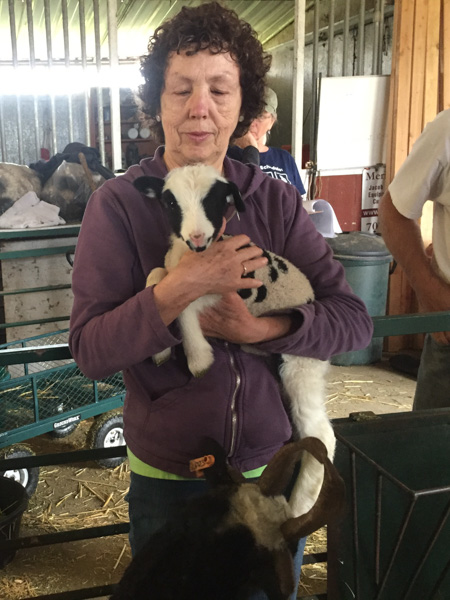 This is her again being held by Peggy. We'd really like her to be friendly too.
This is her again being held by Peggy. We'd really like her to be friendly too.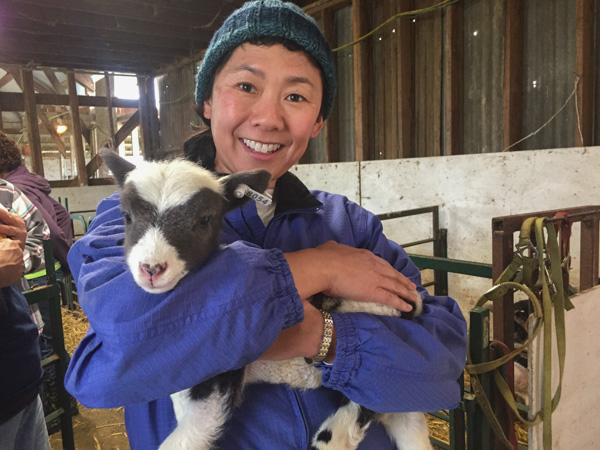 This is Zorra again with Sumi.
This is Zorra again with Sumi.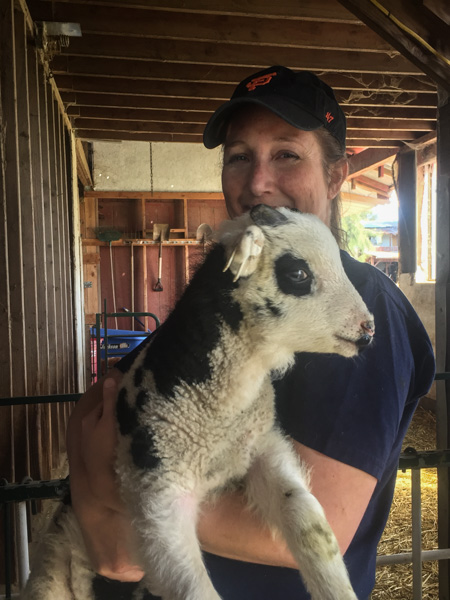 As the lambs get a little older we have other Farm Days. This was Betsy's first day on the farm and she jumpred right in holding lambs as we ear tagged and castrated.
As the lambs get a little older we have other Farm Days. This was Betsy's first day on the farm and she jumpred right in holding lambs as we ear tagged and castrated. 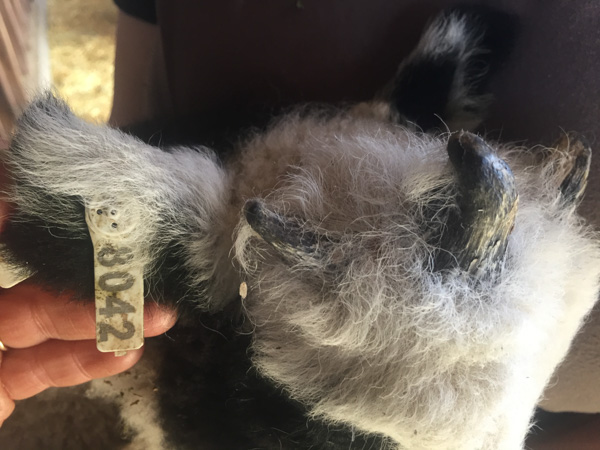 I don't castrate many because it's hard to know how they will grow out and which might be a great flock sire for someone. Some are easy though--too much or too little color to fit within the 15-85% breed standard. This one's horns are already touching at the base under that hair. As the horns grow they will fuse and not grow well separately.
I don't castrate many because it's hard to know how they will grow out and which might be a great flock sire for someone. Some are easy though--too much or too little color to fit within the 15-85% breed standard. This one's horns are already touching at the base under that hair. As the horns grow they will fuse and not grow well separately.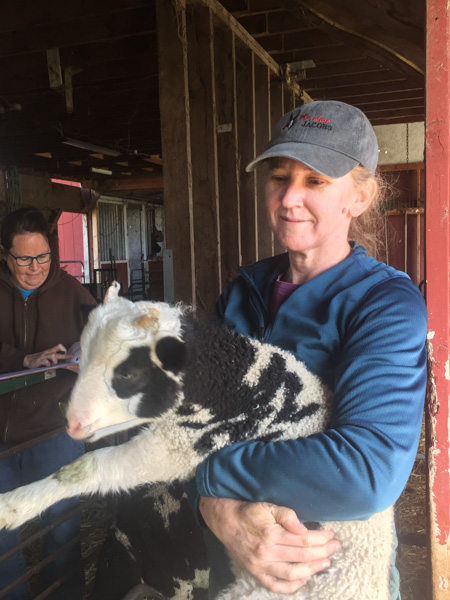 Marina and Maggie (no photo) helped catch lambs too and Mary handled the clipboard. The lambs were all tagged with their white ID tags right after they were born but we put added a colored tag on Farm Day. I like to use a second tag for back-up ID if the first one falls out and also to color code the sire. It's interesting to keep track of that and it also helps to find a lamb when you're looking for one among 75. You can narrow it down some if you have a color to look for.
Marina and Maggie (no photo) helped catch lambs too and Mary handled the clipboard. The lambs were all tagged with their white ID tags right after they were born but we put added a colored tag on Farm Day. I like to use a second tag for back-up ID if the first one falls out and also to color code the sire. It's interesting to keep track of that and it also helps to find a lamb when you're looking for one among 75. You can narrow it down some if you have a color to look for.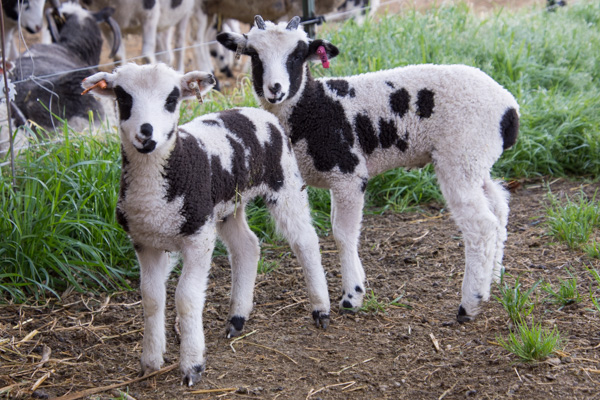 This year Cayenne's lambs got orange tags. Pink tags go in all the lambs that have been castrated.
This year Cayenne's lambs got orange tags. Pink tags go in all the lambs that have been castrated.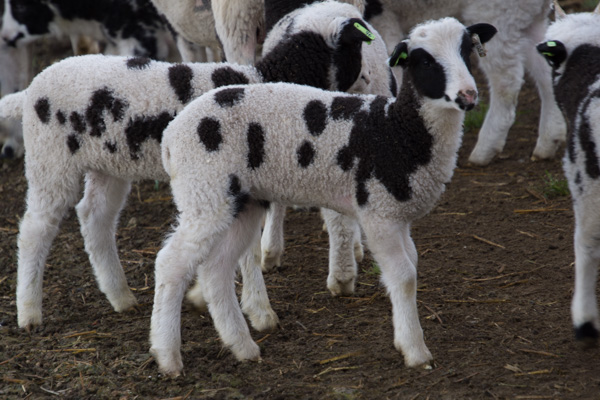 Green means these are Buster's lambs.
Green means these are Buster's lambs.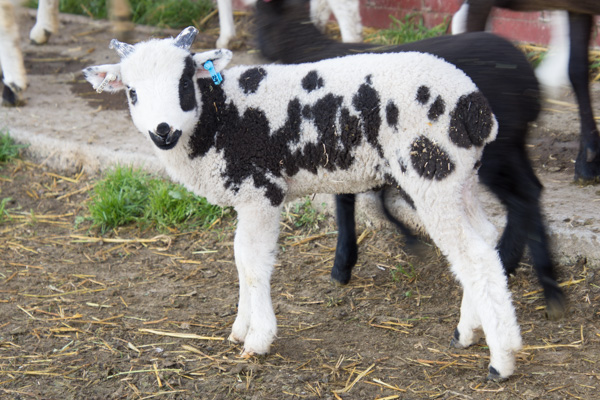 Blue was for Catalyst.
Blue was for Catalyst.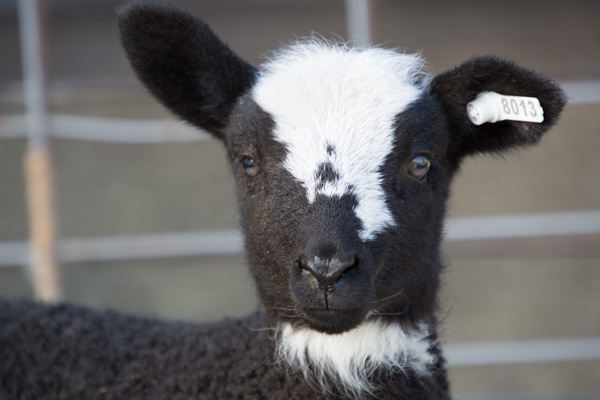 Peyton's lambs are obvious so don't need an extra tag.
Peyton's lambs are obvious so don't need an extra tag.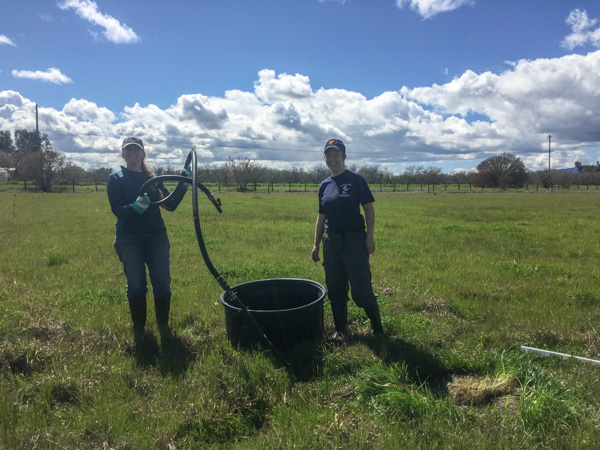 After we tagged all the lambs Marina and Betsy stayed to help me set up the pasture for the sheep. I had put the sheep out for a few days but hadn't cleaned and moved the water trough.
After we tagged all the lambs Marina and Betsy stayed to help me set up the pasture for the sheep. I had put the sheep out for a few days but hadn't cleaned and moved the water trough.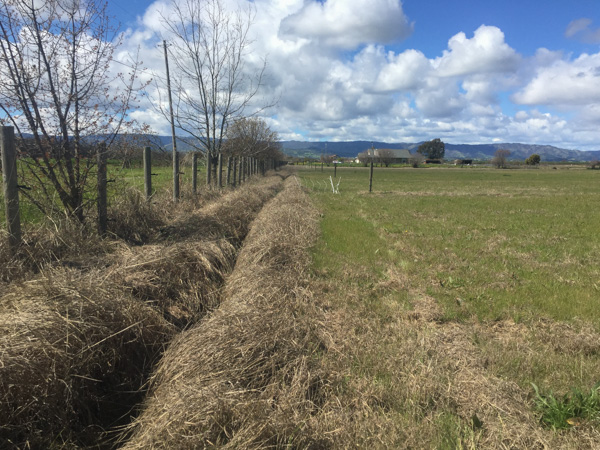 We walked around the pasture and took stock of things. I always point out the issue that I have with the dallisgrass that is out of control. That's what all that dry grass is. I'd much rather see green grass growing. The whole pasture was looking somewhat dismal from a growth standpoint. At this point we had just had March rain after two very dry and cold months. I wasn't seeing much growth--at least not enough to feed 55 ewes and 75 lambs.
We walked around the pasture and took stock of things. I always point out the issue that I have with the dallisgrass that is out of control. That's what all that dry grass is. I'd much rather see green grass growing. The whole pasture was looking somewhat dismal from a growth standpoint. At this point we had just had March rain after two very dry and cold months. I wasn't seeing much growth--at least not enough to feed 55 ewes and 75 lambs. 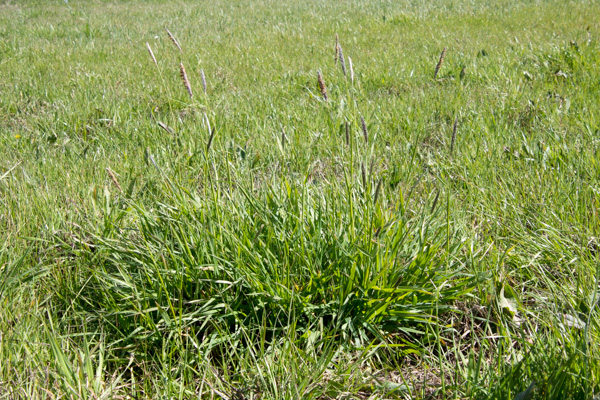 We spotted this grass that I don't recognize.
We spotted this grass that I don't recognize.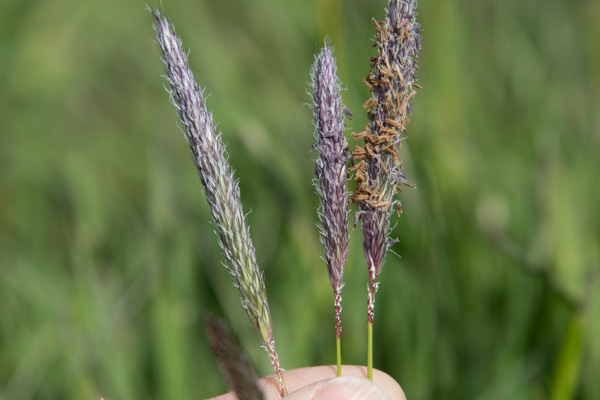 I took photos to send to a friend of Marina's who she think might recognize it.
I took photos to send to a friend of Marina's who she think might recognize it.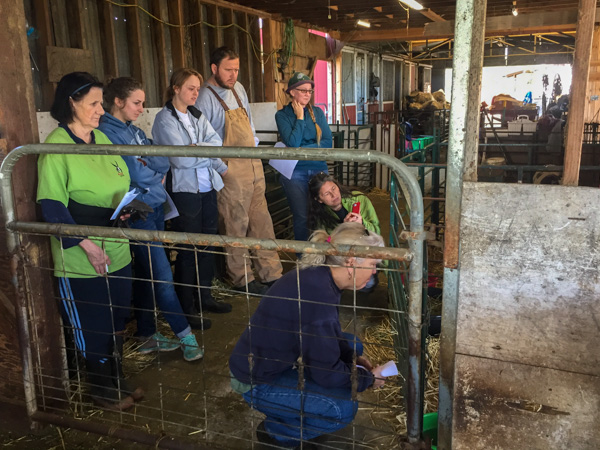 During the discussion about other aspects of raising sheep we kept an eye on Zinnia, the ewe who was lambing. When she got more serious we watched.
During the discussion about other aspects of raising sheep we kept an eye on Zinnia, the ewe who was lambing. When she got more serious we watched.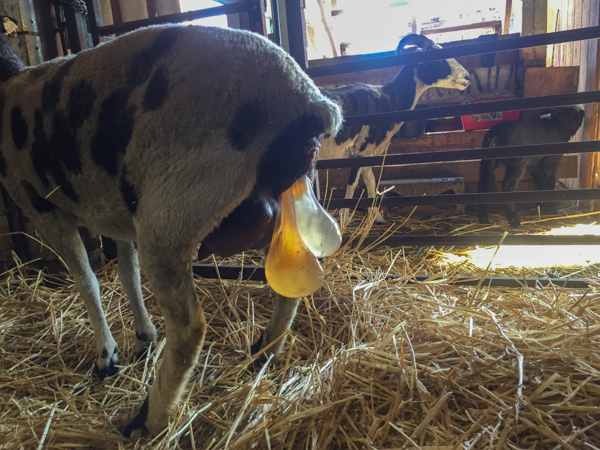 One thing of note was the presence of two bags, each a different color. A lot of time I just see membranes that have broken so I wouldn't know if it were one or two, but it seemed unusual to see two distinct bags. I saw a bit of a small foot emerging but the whole thing seemed to be taking awhile so I thought I'd check. There was one foot and a head. Not very far back was another head. Both lambs were coming at the same time, and it was obvious from the two sacs that one had meconium staining, a sign of fetal distress. I pushed the second lamb back and was able to pull the first lamb with just the head and one foot. I could tell that it was very small. Usually it takes a little while for the second to come, but it was right there too. Weighing these later, they were 4.8 and 4.2 pounds.
One thing of note was the presence of two bags, each a different color. A lot of time I just see membranes that have broken so I wouldn't know if it were one or two, but it seemed unusual to see two distinct bags. I saw a bit of a small foot emerging but the whole thing seemed to be taking awhile so I thought I'd check. There was one foot and a head. Not very far back was another head. Both lambs were coming at the same time, and it was obvious from the two sacs that one had meconium staining, a sign of fetal distress. I pushed the second lamb back and was able to pull the first lamb with just the head and one foot. I could tell that it was very small. Usually it takes a little while for the second to come, but it was right there too. Weighing these later, they were 4.8 and 4.2 pounds.

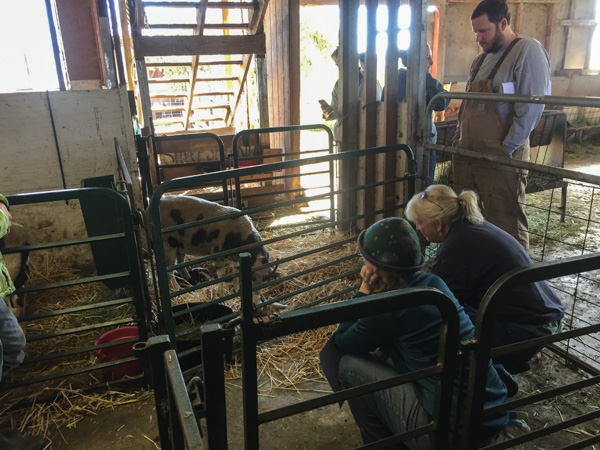 You can't rush a lamb to be ready to nurse. I didn't know if something was wrong with this one, but I knew that, even if it was normal, it needed a little more time. We went outside and looked at the fences and the pasture. When we came back in the first lamb was doing fine. The second still wasn't able to stand but I could hold it up and get it to nurse.
You can't rush a lamb to be ready to nurse. I didn't know if something was wrong with this one, but I knew that, even if it was normal, it needed a little more time. We went outside and looked at the fences and the pasture. When we came back in the first lamb was doing fine. The second still wasn't able to stand but I could hold it up and get it to nurse.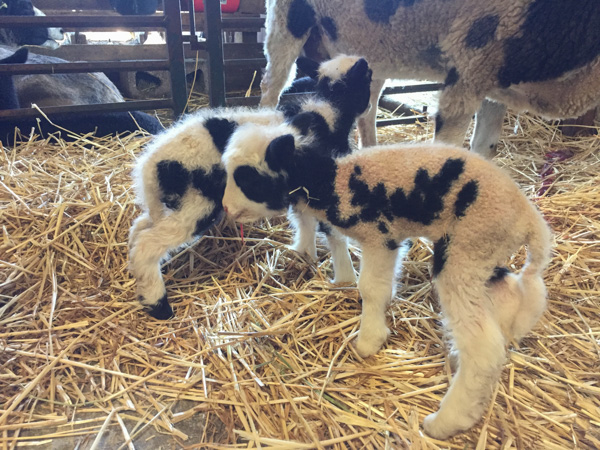 We kept checking back and eventually the second lamb was on it's feet. This photo was taken later in the day.
We kept checking back and eventually the second lamb was on it's feet. This photo was taken later in the day.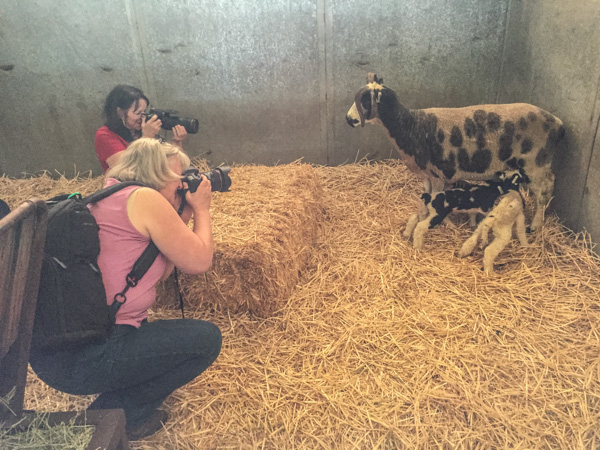 Later that afternoon a friend of mine came with another friend to take photos of the lambs. That's Raquel with triplet ram lambs.
Later that afternoon a friend of mine came with another friend to take photos of the lambs. That's Raquel with triplet ram lambs.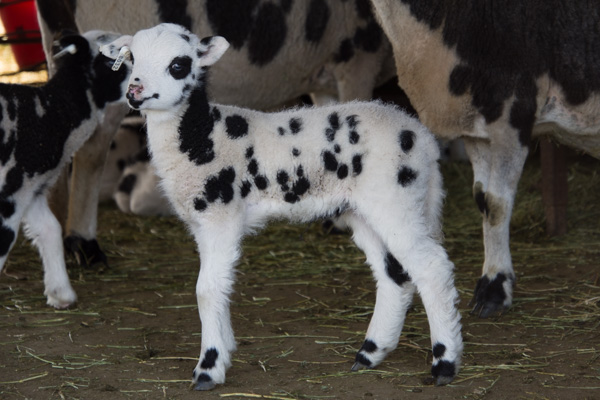
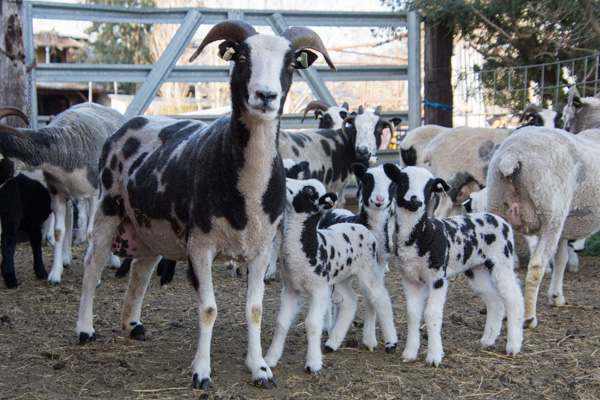
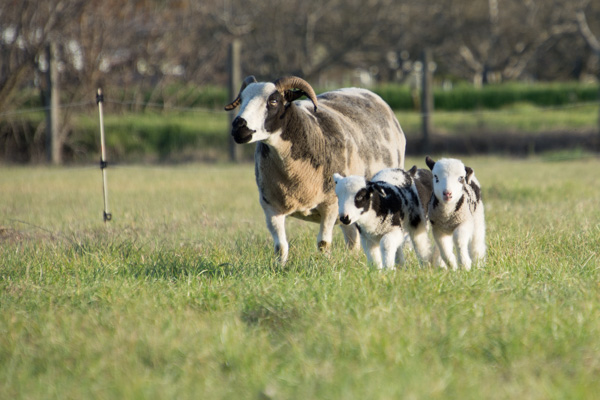
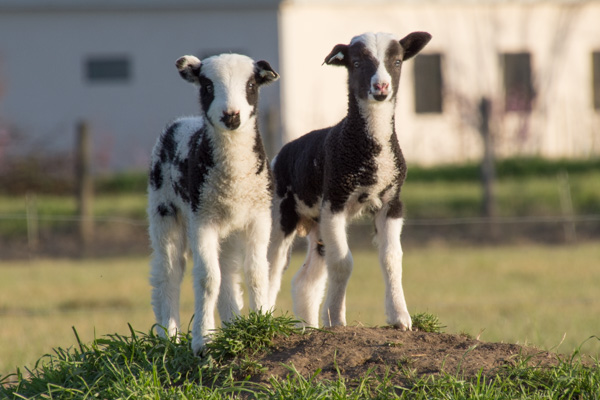

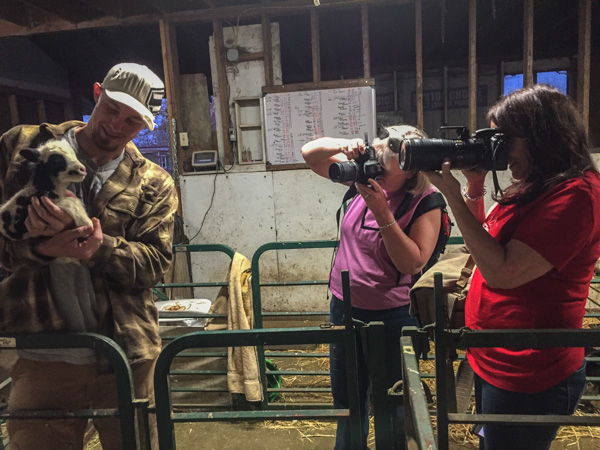 Here is the tiny lamb from the morning.
Here is the tiny lamb from the morning.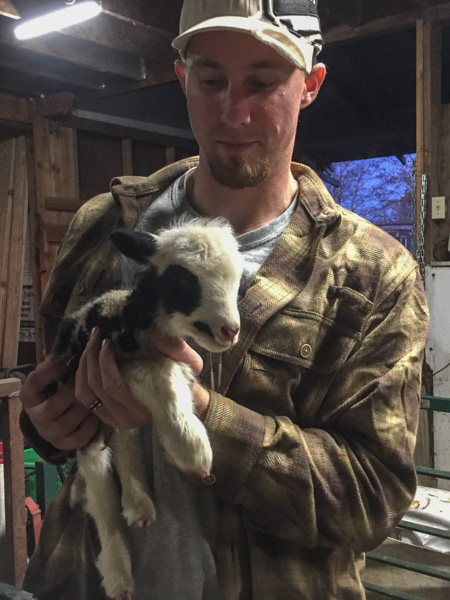
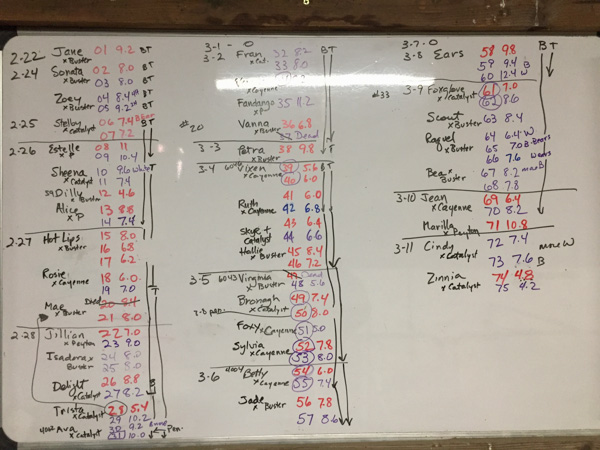 This was getting close to the end of lambing.
This was getting close to the end of lambing.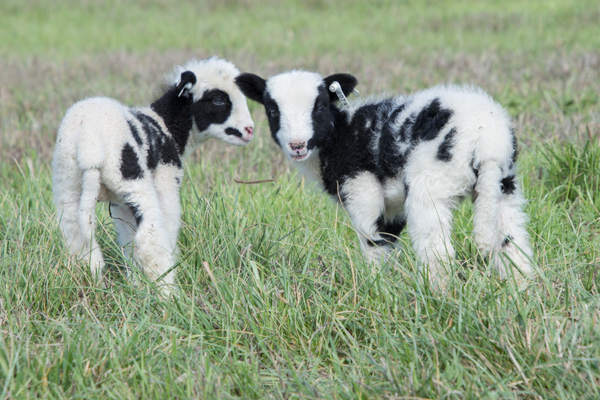 Here are those two tiny lambs 12 days later and here is their
Here are those two tiny lambs 12 days later and here is their 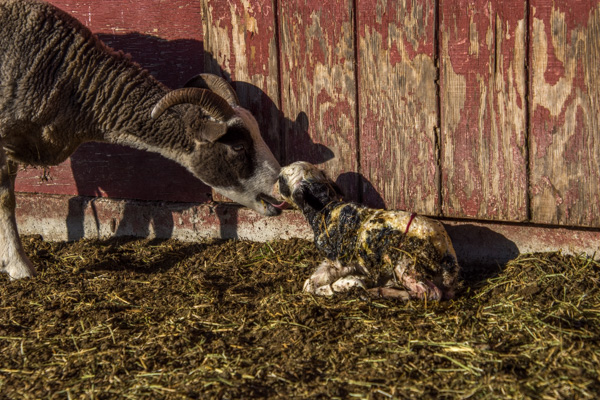 Lamb #1. These aren't usually a pretty side when just born. Slime, dirt, blood.
Lamb #1. These aren't usually a pretty side when just born. Slime, dirt, blood. 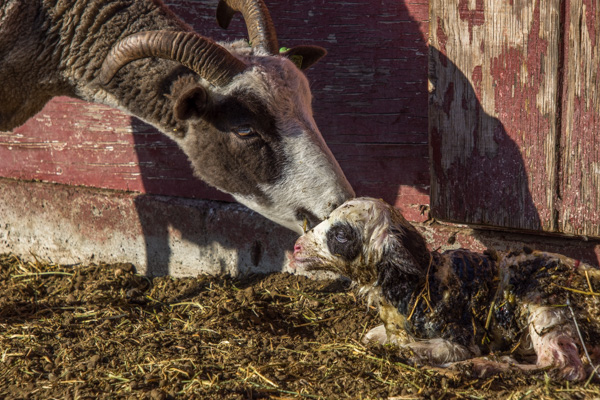 Jacob ewes are usually very good mothers and the lambs are vigorous. Shelby was cleaning up her baby...
Jacob ewes are usually very good mothers and the lambs are vigorous. Shelby was cleaning up her baby...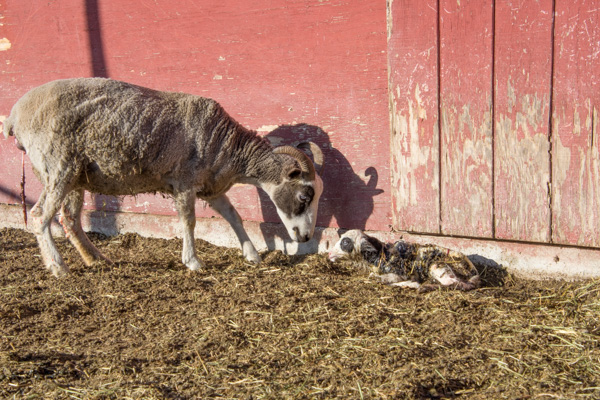 ...even while pawing the ground and having contractions for the second.
...even while pawing the ground and having contractions for the second.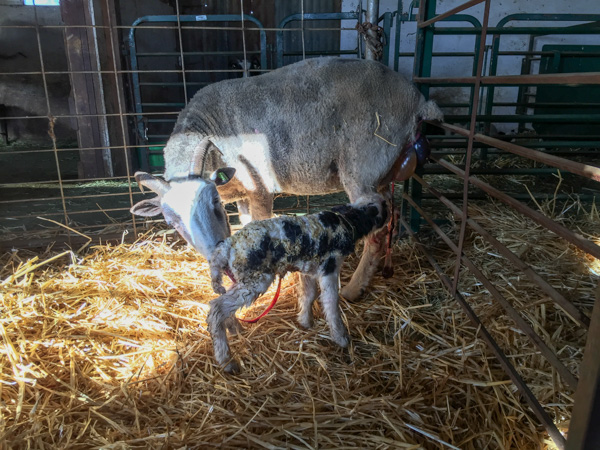 I got them inside the barn and the lamb got to its feet and started looking for milk.
I got them inside the barn and the lamb got to its feet and started looking for milk.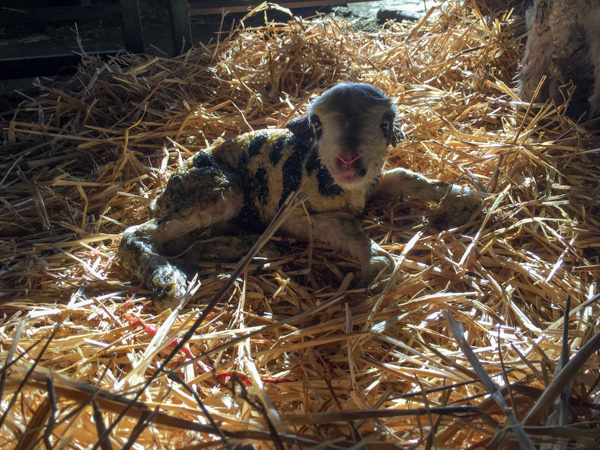 Lamb #2.
Lamb #2.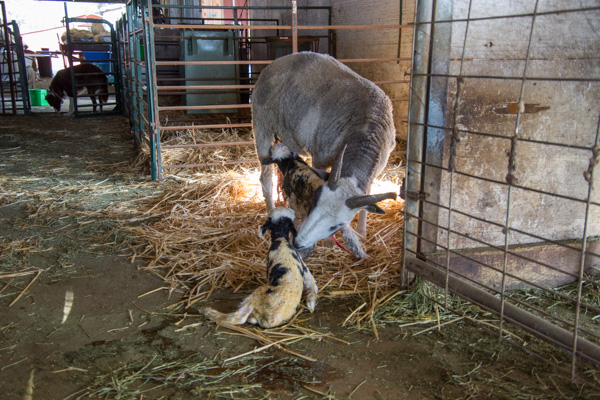 The first lamb is nursing while Shelby cleans the second.
The first lamb is nursing while Shelby cleans the second.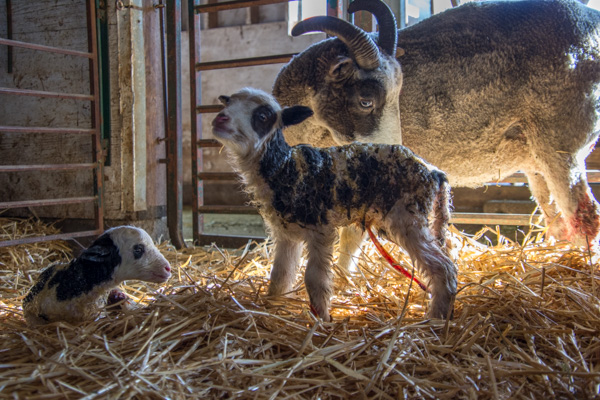 I love the look of this one. These are both lilac ewe lambs sired by Catalyst.
I love the look of this one. These are both lilac ewe lambs sired by Catalyst.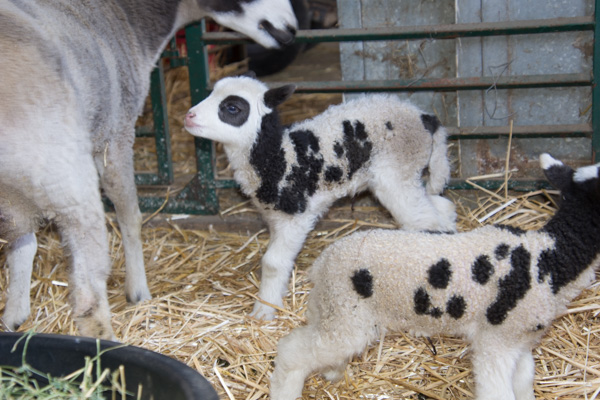 Here they are three days later.
Here they are three days later.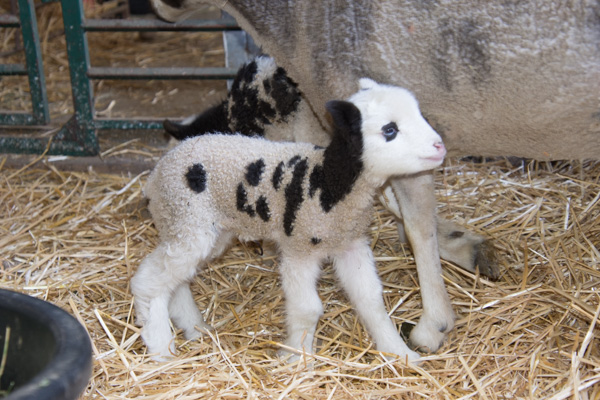 These lambs are listed on my
These lambs are listed on my 